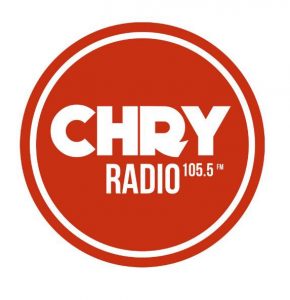NorthEast Radio Watch 12/8/2025: Cichon’s Back in Buffalo
In this week’s issue… Veteran newsman returns - Remembering NY's Leitner, RI's Jones - CT AM saved - Maine AM moves - "Indie" adds suburban signals
In this week’s issue… FM changes coming in Toronto – Scelsa departs NYC radio, Imus to leave TV – Cutbacks at a big CT signal – Hall of Fame time in RI
By SCOTT FYBUSH
 *Back in 2011, one of our big stories from CANADA‘s largest market was the demise of CKLN (88.1), the Ryerson University-associated station that ended up losing its license after years of internal leadership conflicts and failure to comply with the CRTC’s rules. Now one of Toronto’s smaller college stations is going through a surprise format change, and many who found CHRY (105.5) after CKLN’s demise are wondering if the CRTC will let the York University station continue with the transition it’s making.
*Back in 2011, one of our big stories from CANADA‘s largest market was the demise of CKLN (88.1), the Ryerson University-associated station that ended up losing its license after years of internal leadership conflicts and failure to comply with the CRTC’s rules. Now one of Toronto’s smaller college stations is going through a surprise format change, and many who found CHRY (105.5) after CKLN’s demise are wondering if the CRTC will let the York University station continue with the transition it’s making.
Since its arrival on the FM dial in 1986, CHRY has been a consistently inconsistent voice of Toronto’s (and the university’s) cultural mixing pot. Programmed by volunteers from both the campus and the surrounding community, CHRY’s schedule had a little bit of everything, with an emphasis on service to the sizable Caribbean population of north Toronto.
And then came Friday morning: in the space of just a few hours, news began spreading among CHRY’s dozens of volunteer programmers that they weren’t going to be around much longer. Then came unofficial word that CHRY was about to flip to a more professional-sounding format, followed quickly by an official announcement that the station would soon relaunch as “VIBE105.”
 To quote from the station’s new website – “unnecessary quotation marks” theirs – “VIBE105 is an ‘urban alternative’ station. We are ‘your main source’ for the best music and connected voices across your city.”
To quote from the station’s new website – “unnecessary quotation marks” theirs – “VIBE105 is an ‘urban alternative’ station. We are ‘your main source’ for the best music and connected voices across your city.”
What’s “urban alternative”? To quote from the new Vibe management again: “VIBE105 delivers an exciting mix of metropolitan influenced sounds and eclectic voices. Our diverse content offers the best selection of Electronic, Remix, Reggae, Soca, Hip Hop and R&B. VIBE105 also provides an intelligent range of talk programming connecting our audience with timely, critical insight on current affairs both on a regional and global scale. Our programming strength and next-level connection rests with our lead ambassadors who deliver a variety of specialty programs and are identified leaders throughout their respective communities.”
Will those specialty programs, whatever they are, fulfill the terms of CHRY’s campus/community license? And just how did CHRY’s licensee, CHRY Community Radio Inc., come to the decision to bring in professional programmers, led by new broadcast operations manager Randy Reid?
“What we are doing with the license entrusted to us has not been done before in this market, we are making professionalism a requirement and we are putting to rest mediocre perceptions and expectations of the license class,” said CHRY CEO Danae Peart in the official announcement of the flip.
“Mediocre” didn’t sit well with CHRY’s now-former volunteer programmers; they’re speaking out on social media, and it seems likely there will be challenges to the funding that CHRY has received from York University student funds. We’ll be following this one closely, of course…
*Back when the CBC served southern Ontario with 50,000 watts of AM signal on 740, it complained that electrical noise in Toronto’s downtown core kept then-CBL from being heard clearly. That prompted Radio One’s 1999 move to FM – and now the station that succeeded CBL on the 740 signal is also getting an FM voice in downtown Toronto.
Moses Znaimer’s CFZM (740) has asked the CRTC several times for some downtown FM relief; last Monday, the agency granted its latest request, which calls for a 27.3 watt average/100 watt max DA/280 m signal on 96.7 from the top of First Canadian Place. That’s right next door to co-owned CFMZ (96.3), and Znaimer’s MZ Media successfully made the case that since the use of 96.7 required an interference waiver from CFMZ, no applicant other than sister station CFZM would ever be granted use of that frequency.
“Zoomer Radio” will keep its 50,000-watt AM signal, which will continue to serve a huge market outside downtown, but the new FM booster will provide some added coverage into areas where the Toronto streetcars and other sources of electrical noise really do a number on that AM coverage.
The CRTC has been inconsistent at best with its policy for approving these “nested repeaters,” and the CFZM decision adds a new layer of inconsistency: as commissioner Raj Shoan noted in a dissent, the ruling adds a new condition, declaring that CFZM’s new low-power FM relay will count as Znaimer’s second FM station in the Toronto market and preventing any possibility of acquiring a second full-power FM there. In smaller markets such as Oshawa and Chatham-Kent, other broadcasters have been allowed to have two full-power FMs and a nested FM relay for a full-power AM. Shoan points out that the regulations set out a pretty clear distinction between an “FM station” and a “transmitter,” and he says the CRTC should have granted the 96.7 signal without making it count against the ownership cap.
It’s calendar time!
The 2016 edition is due to come back from the printer in just a few days, and it’s ready for you to order!
But until the printer actually hands it over, we’re offering both the regular and limited editions at a discount price, and one lucky winner might get a calendar for free.
Go to the bottom of the column for details.
Please contact Lisa with any questions.
[private]
 *Up north, the FM dial on Manitoulin Island is in the process of being rearranged. Later this summer, CFRM (100.7 Little Current) will will segue from country (“100.7 the Island”) to dance-focused top-40 “Glow 100.7,” once sister station CHAW (103.1) hits the airwaves as the new home of the country format, to be renamed “Great Lakes Country.” CFRM and CHAW will move into new storefront studios in a former drug store on Main Street in Little Current this summer as well.
*Up north, the FM dial on Manitoulin Island is in the process of being rearranged. Later this summer, CFRM (100.7 Little Current) will will segue from country (“100.7 the Island”) to dance-focused top-40 “Glow 100.7,” once sister station CHAW (103.1) hits the airwaves as the new home of the country format, to be renamed “Great Lakes Country.” CFRM and CHAW will move into new storefront studios in a former drug store on Main Street in Little Current this summer as well.
Two new signals are now testing in eastern Canada: in Ottawa, low-powered French-language Christian station CJVN (92.7) began its test broadcasts in mid-April. Out east in Halifax, Wayne Harrett’s CFEP (105.9 Eastern Passage) began testing its new higher-powered signal on Tuesday. From its start as a tiny signal on 94.7, CFEP has grown to its present 1680 watts/37.6 m, and now it’s getting ready to reach more of Metro Halifax by moving to the CBC”s site on Geizer Hill, where it’s going to 2500 watts/157 m, still non-directional.
 *In NEW YORK, Saturday was the closing act for Vin Scelsa and his “Idiot’s Delight” show at WFUV (90.7 New York). The veteran freeform DJ closed out his last New York gig to the sounds of Lou Reed – but not before announcing a surprise replacement.
*In NEW YORK, Saturday was the closing act for Vin Scelsa and his “Idiot’s Delight” show at WFUV (90.7 New York). The veteran freeform DJ closed out his last New York gig to the sounds of Lou Reed – but not before announcing a surprise replacement.
Paul Cavalconte is a WFUV alumnus, Fordham class of 1983, and he’s been working pretty much nonstop in New York radio ever since, at the old WNCN (104.3), WPIX-FM (101.9) and all of WPIX’s successors on that frequency right up to the ill-fated FM News WEMP. In the last few years, he’s been a fill-in host at WQXR (105.9) and at WFUV, which has hired him to host “Cavalconte’s Cavalcade” in the old “Idiot’s Delight” time slot, 8-10 PM on Saturdays.
*If you’ve listened to Don Imus’ radio show very much in the last few months, you know two things: first, that the “I-Man” of 2015 sounds old, tired and nothing like the guy who set morning radio on fire a generation ago – and second, that he’s not shy about hinting that his days in broadcasting are nearing an end. We now know when at least part of that end will come: on last Monday’s show, Imus told listeners that May 29 will mark the end of his TV simulcast on Fox Business Network.
The little-viewed FBN simulcast is Imus’s third stint in morning TV: after the collapse of his previous deal with CBS Radio’s WFAN (660) and MSNBC, Imus’ return to radio at WABC (770) came along with a TV simulcast on, of all things, the rural-oriented “RFD TV” channel, before moving to FBN in 2009.
Appearing on FBN meant Imus had to be in New York, but he’s been vocal about his desire to spend more time in Texas (his Imus Ranch in New Mexico has been sold off). Once the TV simulcast is over, it’s a good bet that for however much longer “Imus in the Morning” endures on radio, it will come mainly from Imus’ home studio in Texas – and we haven’t forgotten Imus’ admonition a few months ago that when he’s ready to hang things up for good, he’ll likely do so without any advance notice.
*Pacifica’s troubled WBAI (99.5 New York) was supposed to have been out of its borrowed studios at Harlem’s WHCR (90.3) on March 31, but as with so much in WBAI’s recent history, deadlines slipped a bit – and so it wasn’t until Friday morning (May 1) that the station finally made its first live broadcast from its new Brooklyn home at 388 Atlantic Avenue. The new digs aren’t fully ready yet – “there will be many inconveniences such as lack of sound proof, limited phone lines and so on,” said GM Berthold Reimers in a letter to staffers, promising “we are working feverishly to build a fully equipped studio within the next 3 months” – but at least WBAI’s studio and business office operations are under the same roof for the first time since losing the station’s last permanent studio home at 40 Wall Street a few years ago.
Out at the east end of Long Island, Texas pastor Juan Alberto Ayala has a CP for a new translator at 94.5, W233BX, but with that frequency due to be occupied by a newly-allocated class A channel over in Sagaponack, Ayala has applied to move the translator down the dial to 93.9. Even if the FCC grants that move, it’s unlikely that the signal will be able to stay long on 93.9, where it’s sure to draw complaints from Hamptons listeners to the fringe signal of WNYC-FM on 93.9 from Manhattan. And even if Ayala finds a new frequency on which to perch, can he really make good on his claim to the FCC that he plans to pick up alleged primary station WXKS-FM (107.9) over the air all the way from Boston?
Another Long Island change: it appears WLIR (107.1 Hampton Bays) and its network of translators along the island have dropped their semi-simulcast of New Jersey’s WAWZ (99.1) and returned to their previous Christian format as “Hope Radio.”
 *A slogan change (and not much else) in the Albany market for iHeart’s classic hits station: it’s not “Oldies 98.3” anymore at WTRY (98.3 Rotterdam), it’s just “98.3 TRY.”
*A slogan change (and not much else) in the Albany market for iHeart’s classic hits station: it’s not “Oldies 98.3” anymore at WTRY (98.3 Rotterdam), it’s just “98.3 TRY.”
Translator news from western New York: in Buffalo, Family Life Ministries has completed the upgrade of its original Buffalo translator, W284AP (104.7), from 19 watts to 250 watts, directional, from the Time Warner Cable tower on LaSalle Avenue (down the street from the former home of WUFO 1080). After Family Life built another high-power Buffalo signal on 106.1, it signed a $125,000 deal to sell 104.7 to Entercom. While that sale doesn’t appear to have closed yet, it’s Entercom that’s operating the translator. 104.7 is licensed to relay Entercom’s WTSS (102.5), and Entercom just shuffled its Buffalo signal lineup to put alt-rock rimshotter WLKK (107.7 Wethersfield Township) on 102.5-HD2, displacing talk WBEN (930)’s simulcast from 102.5-HD2 to the HD3 of WKSE (98.5 Niagara Falls). Is Entercom planning to use the 104.7 signal, which blankets Buffalo’s inner core, to provide a better urban signal for 107.7’s “Alternative Buffalo” format?
Meanwhile out at the WLKK transmitter site, deep in rural Wyoming County, there’s now a second FM signal coming from the tower at the old Rural Radio Network facility. WCJW (1140 Warsaw), already heard on four powerful translators in Warsaw, Batavia, Avon/Caledonia and Nunda, has added a fifth: W283AU (104.5 Eagle) has moved to the WLKK tower on a new frequency, 104.9, with 90 watts from an antenna 325 feet up the tower. It’s now listing Arcade as its community of license.
*In northern NEW JERSEY, the FCC has finally finished untangling a big mess of applicants for one of the few channels available for low-power FM use. The 95.9 frequency drew six applicants, which the FCC winnowed by dismissing at least one that didn’t file proper incorporation papers and several others that didn’t meet its points criteria. That left three applicants standing: Gospel Light Prayer Church in Kearney, Caribbean Sports International in Maplewood and the Preakness Valley United Reformed Church in Wayne. At the end of March, the FCC ordered those three applicants to work out a share-time agreement; instead, Preakness relocated its transmitter site farther north, allowing its 95.9 to go fulltime while the Kearney and Maplewood stations share 95.9 to the south. Gospel Light (which fended off a challenge to the citizenship of its board members) will trade off with Caribbean Sports several times daily, alternating daytime (6 AM-2 PM) and nighttime (2 PM-3 AM) slots on weekdays. All three applicants received their construction permits on Thursday.
There’s late word over the weekend of the death Saturday of Harvey Cox, who spent a decade as the last news director of WMGM-TV (Channel 40) in south Jersey. Cox’s death comes just a couple of weeks after the passing of longtime WMGM-TV GM Ron Smith.
 *In western PENNSYLVANIA, we’re just a week away from Salem’s launch of its new “1250 the Answer” talk format in Pittsburgh. Radio Disney’s WDDZ (1250) will wind thing up any day now, and once it does, Salem will take over the facility on May 13 under new calls WPGP. If that’s reminiscent of the WPGB calls that used to accompany Clear Channel’s talk format on 104.7 (and that still live quietly as the calls on country “Big 104.7”), that’s certainly not an accident.
*In western PENNSYLVANIA, we’re just a week away from Salem’s launch of its new “1250 the Answer” talk format in Pittsburgh. Radio Disney’s WDDZ (1250) will wind thing up any day now, and once it does, Salem will take over the facility on May 13 under new calls WPGP. If that’s reminiscent of the WPGB calls that used to accompany Clear Channel’s talk format on 104.7 (and that still live quietly as the calls on country “Big 104.7”), that’s certainly not an accident.
WPGB’s former morning host, Jim Quinn, is coming back to at least a tiny part of his old listening area: a month after returning to the airwaves on former affiliate WYSL (1040 Avon NY), his new syndicated/streaming show is adding WCNS (1480 Latrobe), east of Pittsburgh, as a new outlet starting today.
*Mike Jax is off the air at WAMO (660 Wilkinsburg/100.1) after wading into the social media morass that surrounded the week’s events in Baltimore. Jax used his personal Instagram page (which also promoted his radio show) to post an item about Baltimore victim Freddie Gray that many listeners found incendiary – and it was just a few hours before he found himself suspended and off the air.
*Bob Wilson was a big name in Pittsburgh radio around the time Quinn was getting famous as a top-40 DJ in the 1970s, and just like Quinn, Wilson worked both ends of the big top-40 rivalry of the 1970s. Wilson came to KQV (1410) in 1967 from KOIL in Omaha, working on the air on the AM side and helping to transition KQV-FM (102.5) to rocker WDVE. Later on, Wilson worked at WKTQ (1320) as creative services director, which launched him into a second career at the helm of Bob Wilson Productions, a commercial production house. Wilson, born Robert Wolfson, was 81 when he died on April 25.
Emil T. Beck, who died Monday in Uniontown, was part of an even earlier generation of Pittsburgh radio, playing jazz tunes on WMCK (1360 McKeesport) and WJAS (1320) in the 1950s and 1960s. Beck, who also worked for the Monessen Chamber of Commerce and the Fayette County Development Council, was 87.
In Lewistown, Steve Buda is departing the morning show to head for Irish country: he’s becoming the morning co-host at Schurz Communications’ WNSN (Sunny 101.5) in South Bend, Indiana. The move gets Buda closer to his native Chicago.
*Since she joined the staff at CONNECTICUT‘s WTIC (1080 Hartford) way back in 1974, Dana Whalen has kept a low profile – but the outcry was long and loud when WTIC’s current owner, CBS Radio, dismissed her as news director last week. Whalen, whose time at WTIC was interrupted only by a few years spent launching WTIC-TV (Channel 61) in the 1980s, drew effusive praise from current and former colleagues, including WNPR talk host Colin McEnroe.
“Dana has been the model of a working journalist, all grit, no flash,” McEnroe wrote in the Hartford Courant. “She’s the lunchpail broadcast journalist in a profession dotted with divas.”
WTIC hasn’t issued any public comment about its staffing cuts, which also included a veteran receptionist at CBS Radio’s Farmington studios.
 *The RHODE ISLAND Radio Hall of Fame inducts its Class of 2015 Thursday night at an awards dinner at Twin River in Lincoln.
*The RHODE ISLAND Radio Hall of Fame inducts its Class of 2015 Thursday night at an awards dinner at Twin River in Lincoln.
This year’s class includes veteran WPRO engineer Duffy Egan, WNRI (1380 Woonsocket) president/GM Roger Bouchard, WPRI/WNAC-TV anchor Mike Montecalvo, and air talents “Big John” Bina (WSAR, WPRO, WWBB), Joannie Edwardsen (WSNE) and Joe Thomas. Paul Fuller and Al Matthews will receive a distinguished service award for their 25 years at WHJY and Mark Katic will be honored posthumously for his time doing news at WHJJ and then, until his death last month, at Boston’s WBZ. The Shepard Award, honoring founders of Ocean State radio, goes to the late Fred Friendly, who started his career at WEAN in Providence in 1937 before rising to fame as Ed Murrow’s producer at CBS News for many decades.
*Sad news from VERMONT: Joel Chandler, who was the first host of WCAX-TV (Channel 3)’s long-running “Across the Fence” when that show started back in 1955, has died. Chandler, a Plattsburgh native, also did radio at Burlington’s WJOY and WCAX/WVMT and Plattsburgh’s WEAV, as well as TV at Vermont ETV. Chandler died April 23 at age 87.
Happier news from Vermont: Steve Cormier has hired on with Ken Squier’s Radio Vermont group (WDEV/WLVB/WCVT) as its new director of sales. Cormier, who’s best known for his long stint on Burlington morning radio as half of “Corm and the Coach,” comes to Waterbury from Brattleboro, where he’s been managing WTSA/WTSA-FM. He replaces Tom Beardsley, who retired at the end of April but will continue to be part of the WDEV family for “special projects.”
*And we close with two obituaries from MASSACHUSETTS: Max Marek joined the engineering staff at Springfield’s brand-new WWLP-TV (then on channel 61) in December 1953, just nine months after the station signed on. Marek became WWLP’s chief engineer in 1984 and stayed with the station through its ownership transitions and its move to new studios in Chicopee before retiring just after the turn of the century. Marek died Wednesday at the Holyoke Soldiers’ Home, at age 87.
In the Boston area, the early years of this column and its sister mailing list were enlivened by the contributions of “Laurence from Methuen,” the geographically-colorful nickname of Laurence Glavin. For all of his knowledge of the broadcast scene, Glavin was an observer from outside, working at Wang Labs and the IRS, but he was an occasional part of our “Let’s Talk About Radio” gang on WJIB (740) in the 1990s and a regular attendee at NERW gatherings in greater Boston. Glavin died April 19 at age 74.
[/private]

As we announced a few weeks ago, the 2026 edition of the Tower Site Calendar will be the last.
We began publishing it 25 years ago, and the broadcast landscape is radically different now.
Radio World just ran an excellent article about us if you want to know more.
Once it’s gone, that’s it. We won’t be printing any more.
Thank you to everyone who saw our announcement and rushed to buy it. We appreciate you.
(There are some calendars from previous years if you want more of a tower photo fix — all under $5.)
But don’t wait to get this year’s Tower Site Calendar — buy it now!
We are selling the Broadcast Historian’s Calendar again this year, but we have that in an even smaller quantity — definitely don’t hesitate for that.
And visit the Fybush Media Store to check out our selection of books and videos, too!
From the NERW ArchivesYup, we’ve been doing this a long time now, and so we’re digging back into the vaults for a look at what NERW was covering one, five, ten, fifteen and – where available – twenty years ago this week, or thereabouts. Note that the column appeared on an erratic schedule in its earliest years as “New England Radio Watch,” and didn’t go to a regular weekly schedule until 1997. One Year Ago: May 5, 2014 *There’s a new program director on the way to NEW YORK‘s number-two top-40 station – and perhaps some bigger changes, too. Rick Thomas is on his way eastbound from CBS Radio in Los Angeles to take over as program director of WNOW-FM (92.3), filling the chair that’s been empty since Rick Gillette exited for Cumulus in Washington back in December. Thomas had been programming two older-skewing stations in Los Angeles, AC KTWV (94.7) and classic hits “K-Earth” KRTH (101.1), but he comes armed with a top-40 background from stints in Sacramento, San Diego and San Francisco. His arrival at WNOW fuels the ongoing speculation that the station is considering a rebranding to CBS Radio’s national “AMP” brand. Uptown at Cumulus, another CBS PD named “Thomas” is taking the helm of what’s definitely a national brand. Brian Thomas exits CBS (where he’d most recently been based in Tampa, programming country WQYK-FM and classic hits WRBQ-FM) to come back to New York to program “Nash” country WNSH (94.7 Newark) and serve as Cumulus corporate PD. Brian Thomas’ New York experience includes a stint as PD of WCBS-FM (101.1), where he supervised the return of classic hits to replace “Jack” back in 2007.
Removing the old analog antenna, all 3600 pounds and 47 feet of it, leaves WBIN-DT (RF 35) and WYCN-LP (Channel 13) on the tower. (Thanks to Rick Zach of Binnie Media for the photo at left!) *A day after WBIN’s Thursday tower pick, Steve Silberberg completed his takeover of WWHK (102.3 Concord), replacing the temporary loop of “Live from the River Music Hall” excerpts with the station’s first real format in years. It’s now “102.3 the River,” a partial simulcast of AAA WXRV (92.5 Andover) with local ads and news for central New Hampshire inserted into the “River” feed. Will that same Concord feed take over for the straight WXRV simulcast that’s been heard to the north on WLKC (105.7 Campton)? Five Years Ago: May 3, 2010 Since being spun off from the Shaw media empire in 1999, Corus Entertainment has become one of the biggest broadcasters in CANADA. But despite heavy investments in Quebec, Corus was never quite able to make its operations in the second-largest province pay off – and last week the company announced that it’s exiting Quebec, selling 11 stations to Cogeco Incorporated and putting a twelfth up for sale. Cogeco will pay Corus C$80 million for its four-station Montreal cluster (sports-talk CKAC 730, English-language AC CFQR 92.5, rocker CKOI 96.9 and talker CHMP 98.5) along with nearby CIME (103.9 St. Jerome), as well as Quebec City’s CFEL (102.1 Montmagny) and CFOM (102.9), Sherbrooke’s CKOY (104.5) and CHLT (107.7), CJRC (104.7) in Gatineau-Ottawa and CHLN (106.9) in Trois-Rivieres. Cogeco already owns five signals across the province: the “Rythme FM” network of CFGL (105.7 Montreal), CJEC (91.9 Quebec City), CFGE (93.7 Sherbrooke) and CJEB (100.1 Trois-Rivieres), along with CJFM (93.3 Quebec City). Its purchase of the Corus stations will put Cogeco over the two-FM-per-language ownership limits in Quebec City, Montreal and Sherbrooke, which means another round of station sales is likely. Meanwhile, Corus is still seeking a buyer for CKRS (98.3 Saguenay) – and licking its financial wounds after its Quebec adventure, which involved nearly C$300 million in station purchases from the old Metromedia and Power Broadcasting groups back in 2000. (Some of those stations were outside Quebec and have remained with Corus; two of the big signals that came from Metromedia, Montreal’s Info690 CINF and 940 CINW, were simply pulled off the air earlier this year when Corus declared them unprofitable. It’s still not clear whether those licenses have been officially revoked, or whether they might yet be sold as part of Corus’ exit from the province.) MONDAY MORNING UPDATE: Corus’ exit from Quebec radio turns out not even to be the big media deal of the week north of the border. On Monday morning, Shaw Communications, the media giant from which Corus was spun off back in 1999, announced that it’s paying C$2 billion to buy the over-the-air and specialty cable holdings of Canwest Global Communications, including the Global television network. Much more next week… Is Joe Scarborough history on NEW YORK radio? The MSNBC “Morning Joe” host was off the air last week at WABC (770) and his other Citadel syndication outlets, but there were plenty of conflicting stories about his radio future. The official story from Citadel and Scarborough himself is that the show, which aired in the 10 AM-noon slot between Don Imus and Rush Limbaugh, is on a temporary hiatus while it’s being “retooled” as a three-hour show. But behind the scenes, there are plenty of questions about that story – not least the question of what three-hour slot Scarborough and co-host Mika Brzezinski could possibly occupy on a schedule that’s pretty well locked down with syndicated offerings straight through to early evening. (And there’s no way that Scarborough and Brzezinski could do an evening or late-night show while still hitting the MSNBC TV airwaves every morning at 6…) Ten Years Ago: May 2, 2005 There’s been plenty of speculation – present space included – that the big move of WBEC-FM (105.5) in western MASSACHUSETTS would lead to the sale of some of the last remaining assets of Bruce Danziger and Jeff Shapiro’s Vox Media. That will indeed be the case, as Vox files to sell WBEC-FM to Jim Morrell’s Pamal Broadcasting, which will take over operation of the station when it completes its move from Pittsfield to Easthampton, where it will serve Northampton, Amherst and Springfield. Pamal already owns adult rock WRNX (100.9 Amherst) in the market, as well as WPNI (1430 Amherst), which is leased to public radio WFCR. It’ll pay $7 million to add WBEC-FM to the group – and if we’re reading the sales contract right, Pamal gets the WBEC-FM calls and the intellectual property that includes the “Live 105” nickname and top 40 format, which we’d expected to stay with Vox in the Berkshires on a different frequency. (Which it may yet do; there’s little question that the remaining Vox stations in Pittsfield, Great Barrington and North Adams will be sold as well, as Shapiro and Danziger dissolve what’s left of the company.) That leaves one more station remaining in Vox: WNYQ-FM (105.7), which is moving from Queensbury, in the Glens Falls market, to Malta, in the Albany market, as part of the WBEC-FM move. Pamal has been LMA’ing WNYQ from Vox since last year, and the WBEC-FM filing reveals that Pamal has an option to buy WNYQ as well, though there will be market-concentration issues in Albany, where the company already has five FM stations and two AMs. In MAINE, it’s the end of the line for Mark Persky and WBLM (102.9 Portland) after 28 years together. The veteran morning man has been off the air at WBLM since February, when he disappeared from the “Captain and Mark” morning show, which still features PD “Captain” Herb Ivey along with former midday jock Celeste. Last week, the station announced it had parted ways with Persky; there’s already plenty of noisy speculation that he’s headed for Nassau’s “Frank” WFNK (107.5 Lewiston), which has been eating away at WBLM’s ratings. (NERW irony alert: When Persky joined WBLM way back, it was still operating on that very 107.5 signal…) It’s the end of an era in NEW YORK radio history: At 1:00 Saturday afternoon (April 30), WOR (710 New York) began broadcasting from its new home at 111 Broadway, closing the book on almost eight decades of radio from 1440 Broadway. Bob Gibson did the last newscast from 1440 at noon Saturday, followed at 1 PM by the first newscast from 111 with Dara Welles – and the word is that engineers Tom Ray and Kerry Richards had very little sleep over the weekend as they got everything in place at the new digs. Fifteen Years Ago: May 6, 2000 This week’s column might better be called “Clear Channel Watch” for all the news Lowry Mays and company have generated in the region over the past few days — not least of which is word of an impending purchase making waves in the Hudson Valley radio scene. It hasn’t been officially announced by either company yet, but we’re hearing that $24 million is the price Clear Channel will pay to add Straus Media Group’s ten stations in the region. Included in the deal are: * Standards WCKL (560) Catskill and news-talk WHUC (1230) Hudson The Straus stations fill in a gap between CC’s existing clusters in Albany (including WPYX 106.5, which has a translator in the northern Hudson Valley), Utica, Binghamton, New York City, and Connecticut. If this deal comes to fruition, it will be the first time one of the big national groups has set foot in the Hudson Valley, and certainly the possibility of moving many of the stations’ operations to the existing CC clusters nearby can’t be ruled out. We’ll keep watching this one for developments… One that Clear Channel has confirmed: The company will pay $5 million to Cram Communications for that company’s Syracuse-market WVOA (105.1 DeRuyter). WVOA currently programs religion, simulcast on WVOQ (103.9 Mexico) in Oswego County to the north, as well as on translators W243AB (96.5 Westvale) and W237AY (95.3 DeWitt) in the Syracuse area. Those stations, along with WVOA’s sister AM station, WSIV (1540 East Syracuse) don’t go to Clear Channel, which leads us to think that the WVOA format will continue on WVOQ and the translators. In MAINE, J.J. Jeffrey’s Atlantic Coast Broadcasting is adding to its station group with the purchase of Carter Broadcasting’s three Maine stations. Jeffrey gets to add Portland’s WLOB (1310) and Rumford’s WLOB-FM (96.3) and WLLB (790) to his existing group, which includes sports “WJAB” WJAE (1440 Westbrook) and WJJB (900 Brunswick), CHR WRED (95.9 Saco), and adult AC WCLZ (95.5 Topsham). NERW knows Jeffrey must appreciate the irony of longtime competitors “WJAB” and WLOB finally uniting under one roof; those with shorter memories will at least recall that the Carter stations were to have been part of the failed sale to Catholic Family Radio last year. Expect a format change from religion when the deal closes… The FCC’s approval of the CBS/Viacom merger this week creates the first TV duopoly in Boston, as CBS’s WBZ-TV (Channel 4) and Viacom’s WSBK (Channel 38) join forces. Boston isn’t one of the markets where the FCC is ordering divestitures; the cross-ownership cap now allows 2 TVs and up to 6 radios in the largest markets, and CBS’s 1 AM and 4 FMs stay under the cap. Viacom is adding one more Massachusetts station, too: WLWC (Channel 28) in New Bedford is being transferred from LMA partner “C-28 FCC License Subsidiary Inc.” to Viacom. (WLWC doesn’t count against duopoly, of course, because it’s a Providence-market station). Twenty Years Ago: May 4, 1995 1550 WNTN in Newton (10kw-D) has added a new block of programming to its leased-time format. The “Asian American Broadcasting Network” is heard from 4:30 till 7:30 pm, and rebroadcast the following day from noon till 3. It’s the first broadcasting venture of businesswoman Sarinna Chiang, and the first Chinese-language program on commercial radio in Boston. WBZ’s veteran morning news anchor, Gary LaPierre, will be in New York Friday morning (May 5), to sub for Paul Harvey on Harvey’s morning and midday news and comment broadcasts. This will be a chance for the nation’s largest radio audiences to hear what we’ve all known for years — Gary’s one of the best there is. We’re all thrilled for Gary, and he’s pretty excited himself. |
In this week’s issue… Veteran newsman returns - Remembering NY's Leitner, RI's Jones - CT AM saved - Maine AM moves - "Indie" adds suburban signals
In this week’s issue… Scripps stations face takeover - Sinclair moves more affiliations - CT stations sold - Maine AM surrendered - Remembering WVBR's Shapiro, WABC's Morgan
In this week’s issue… CT TV legend succumbs to cancer - Remembering PA's Adams - FCC still stalled by shutdown - Pittsburgh morning host exits
In this week’s issue… FCC faces reopening challenges - Veteran Boston anchor retires - Morning shift in Toronto - NYC FMs expand reach